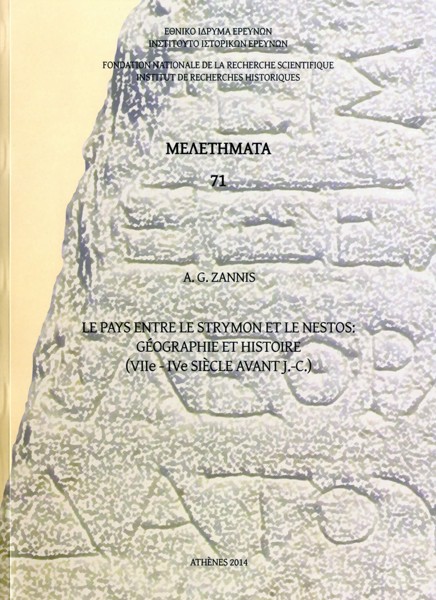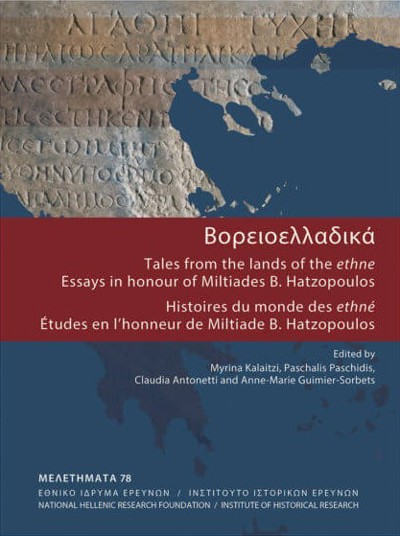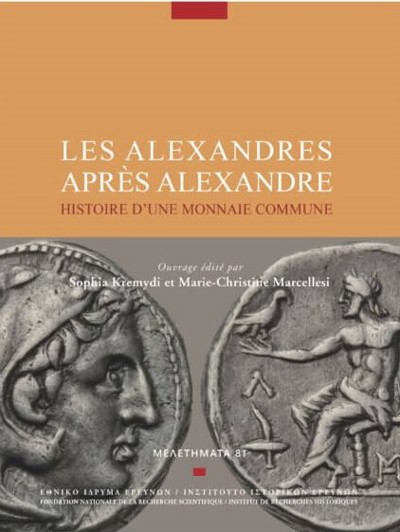
The Royal Coinages of Kition and Idalion
A Numismatic and Historical Study (6th-4th c. BC)
Evangeline Markou
- Pages: 592 p.
- Size:216 x 280 mm
- Illustrations:116 b/w, 20 tables b/w., 3 maps b/w, 198 facsimiles and 88 plates
- Language(s):English
- Publication Year:2025
- € 118,00 EXCL. VAT RETAIL PRICE
- ISBN: 978-960-371-101-8
- Hardback
- Available
This monograph presents the first comprehensive study of 1,759 silver and bronze coins minted by the kings of Idalion (161 coins) and Kition (1,598 coins) in Cyprus, spanning from the late 6th to the late 4th century BC. The largest corpus of these coins yet assembled — classified through a die study — is accompanied by a full metrological and typological analysis of all denominations issued under each king. A synthetic study follows, addressing weight variations, production volume, iconography, hoard evidence, overstrikes, and countermarks.
The historical chapters contextualise the numismatic material in relation to ancient texts, inscriptions, and archaeological data, examining the numismatic policies of the kings from Persian to Macedonian control, culminating to the dissolution of the kingdom of Kition (and Idalion) by Ptolemy in 313/2 BC. They explore the origins of coinage, dynastic successions, key 5th-century episodes — including a first unsuccessful attack and then the conquest of Idalion by Ozibaal — the 4th-century acquisition and loss of Tamassos by Pumayyaton, and Kition’s rivalry with Salamis.
Six appendices enrich the study: additions to the gold coin corpus (ΜΕΛΕΤΗΜΑΤΑ 64), reinterpretations of debated coinages, a study of weight standards, revised dynastic chronologies, and an analysis of Phoenician coin legends by Stevens Bernardin.
Preface
Acknowledgements
Chronological Periods, Phoenician Kings’ Names and Maps
SECTION A. Foundations of Research: Archaeological, Epigraphic, and Numismatic Scholarship
1. Historiography – Literature Review
1.1. Excavations and Research
1.2. Epigraphic Discoveries and Publications
1.3. Numismatic Literature and Digital Resources
SECTION B. COIN CORPUS, ANALYSIS AND SYNTHESIS
1. Coin Corpus
A. Idalion
B. Kition
2. Analysis: Coin-Die and Metrological Studies
2.1. Coin-Die Study
2.2. Metrological Study: Weight and Volume Analysis
3. Synthesis
3.1. Metrological and Typological Analysis
3.2. Flan and Coin-Die Observations
3.3. Coin Iconography
SECTION C. CIRCULATION, OVERSTRIKES AND COUNTERMARKS
1. Coin Circulation
1.1. Hoard Evidence
1.2. Single Finds in Context
1.3. Cypriot Coins in Modern Trade
2. Overstrikes and Countermarks
2.1. Overstrikes
2.2. Countermarks
SECTION D. HISTORICAL COMMENTARY
1. The Kings of Idalion and the Kings of Kition in the 6th – 5th Centuries
1.1. An Introduction: The Kings of Cyprus in the Late CA – Early CC Period
1.2. Numismatic Data on the Earliest Kings of Idalion and of Kition
1.3. Baalmilk I, King of Kition
1.4. The Successive Kings of Idalion: Sa ( ) I, Ki ( ), Ka-ra ( ), Sa ( ) II and the “e-ta-li” Series
1.5. The Idalion Tablet: Kition’s Unsuccessful Attempt to Conquer Idalion
1.6. Athenian and Persian Politics in Cyprus, ca. 494 to 449
1.7. Ozibaal, First King of Kition and Idalion
1.8. Baalmilk II, King of Kition and Idalion
1.9. Patterns of Coinage Production in the 5th Century
2. The Kings of Kition (and Idalion) in the 4th Century
2.1. The Enigmatic Reign of King Baalrom
2.2. Milkyaton, King of Kition and Idalion
2.3. Pumayyaton,the Last King of Kition, Idalion and Tamassos (… for a While)
2.4. Patterns of Coinage Production in the 4th Century
3. Epilogue: Kition and Salamis – Parallel Worlds, Worlds Apart
CONCLUSION: THE NUMISMATIC POLICY OF THE KINGS OF IDALION AND THE KINGS OF KITION
APPENDICES
LIST OF ILLUSTRATIONS
BIBLIOGRAPHY
INDEX
FACSIMILES
COIN PLATES




